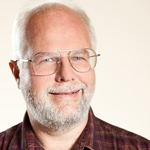The presentation describes application of the Domain-Driven Design (DDD) methods to software design and development for large companies, which possess system complexity. In this case business model of company, model of IT system and system itself are inevitably very complex and it is practically impossible to guarantee their correspondence. In addition, these models and consequently the structure of the system could be hardly understood by business specialists. This causes additional risks for software company (because the model could not be entirely verified by business) and makes further work with such system more complicated for business specialists.
Application of the DDD principles helps to work effectively in conditions of system complexity. It means constructing the single model of company and system and describing it with ubiquitous language, which could be easily understood by all the participants of the project: business experts, analysts, developers and end-users. This enables business specialists to verify the model and to plan changes in the system independently, without attraction of highly skilled architects and business analysts.
We successfully apply described approach for development of corporate applications. Constructing single model we use diagrams of three types (of classes, of accounting and of states) and describe them using business terms. These diagrams are transparently reflected in the system, up to the use of the same terms in the interface.
Thus, DDD makes possible successful work in conditions of system complexity due to the use of ubiquitous language and construction of the single model, which is understandable for all participants of the project, including specialists from the business side.
Author: Maxim Tsepkov
Co-founder and the chief software architect, CUSTIS
Maxim Tsepkov is a co-founder and the chief software architect of CUSTIS since 1996, he has master degree from Moscow Institute of Physics and Technology, Control/Management and Applied Mathematics department, has many author’s certificates. The main author’s area of interests is the architecture of enterprise information systems, especially searching for balance between the common architecture patterns and practice of specific customized development for unique business processes.
Maxim Tsepkov is an expert in business and system analysis, deployment and development architecture patterns, models and diagrams. Many CUSTIS projects based on several frameworks that developed under the guidance of Maxim Tsepkov. He is the main designer of the application patterns for information system named as Accounting Engine and accounting diagrams, used for visualization and desining of accounting. This technologies used in all company’s projects for business. In fact, Maxim contributes to most of company’s projects. He is competent in design of distributed systems, system integration, and graceful deployment process, when new system gradually replaced the old system without any business-process disturbance.
Maxim contributes to evolution of agile software development process in company and practice of team software design. He is an active of professional conferences and author of various publications in CIO magazines.

 Русский
Русский  English
English 































Pingback: Осень - время конференций | Блоги сообщества аналитиков
тема